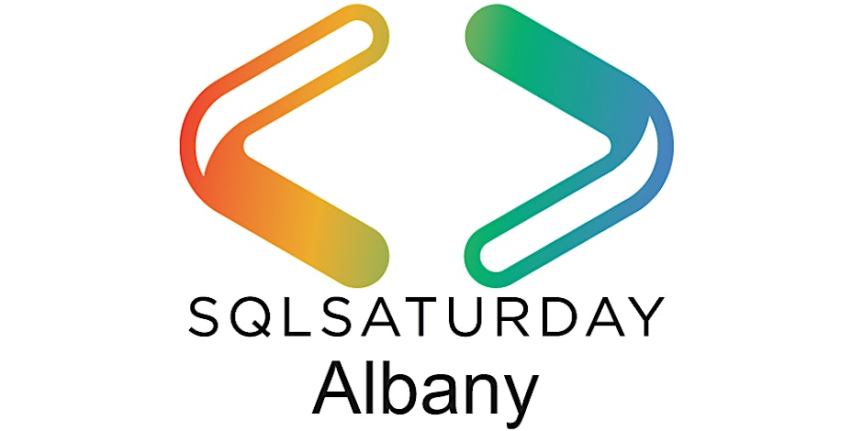It's official! We will be hosting a SQL Saturday here in Albany, NY on August 3! Click the link for more information, to register for the event, or to submit a presentation! SQL Saturday Albany is an all-day technical training event organized by the Capital Area SQL Server User Group. This event provides data-centric training … Continue reading We’re hosting a #SQLSaturday! August 3 — save the date! #SQLSat1083 #SQLSatAlbany
Category: Microsoft
June Monthly CASSUG Meeting @CASSUG_Albany #SQLFamily #Networking
Greetings, data enthusiasts! Our June meeting is scheduled for Monday, June 12, at 5:30 pm! We will meet in person at Rensselaer Chamber of Commerce, 90 4th Street, Troy, NY. For more information and to RSVP, go to our Meetup event page at https://www.meetup.com/capital-area-sql-server-user-group/events/290678900/ Our meeting schedule is usually as follows: 5:30 PM: Food, soft drinks, and networking 6:15 … Continue reading June Monthly CASSUG Meeting @CASSUG_Albany #SQLFamily #Networking
May Monthly CASSUG Meeting @CASSUG_Albany #SQLFamily
Greetings, data enthusiasts! Our May meeting is scheduled for Monday, May 8, at 5:30 pm! We will meet in person at Rensselaer Chamber of Commerce, 90 4th Street, Troy, NY. For more information and to RSVP, go to our Meetup event page at https://www.meetup.com/capital-area-sql-server-user-group/events/290678891 Our meeting schedule is usually as follows: 5:30 PM: Food, soft … Continue reading May Monthly CASSUG Meeting @CASSUG_Albany #SQLFamily
Less than two weeks until #PASSDataCommunitySummit! #PASSSummit #SQLFamily #Networking
November arrived yesterday (where did this year go???), and it only recently occurred to me that I will be in Seattle in less than two weeks, speaking for the fourth time at PASS Data Community Summit (or it's equivalent)! On Wednesday morning, among the first sessions of Summit, I will be giving one of my … Continue reading Less than two weeks until #PASSDataCommunitySummit! #PASSSummit #SQLFamily #Networking
#PASSDataCommunitySummit is here! (And I’m speaking!)
It's here! PASS Data Community Summit starts today! This is my third straight year speaking at PASS Data Community Summit (or its equivalent), and I look forward to this event each year! This is an event that has become near and dear to my heart, and I try to attend whenever I have the opportunity. … Continue reading #PASSDataCommunitySummit is here! (And I’m speaking!)
January CASSUG Monthly Meeting
Our January meeting will again be online. NOTE: you MUST RSVP to this Meetup (https://www.meetup.com/Capital-Area-SQL.../events/275432320/) to view the Zoom URL! Our January guest speaker is Bob Ward! Topic: SQL Server Edge to Cloud SQL Server is everywhere you need it from the IOT Edge to your cloud to public clouds. With all of these options … Continue reading January CASSUG Monthly Meeting
#PASSSummit2020 part 5: The debrief #PASSSummit #PASSVirtualSummit
(Ed. Note: I had intended to get this out last week, but a family emergency prevented me from doing so, so this article is a week later than I'd wanted to post.) Now that I've had the weekend to recover from a busy PASS Summit 2020 week, I can write about my thoughts and impressions. … Continue reading #PASSSummit2020 part 5: The debrief #PASSSummit #PASSVirtualSummit
#SQL101: Create tables from CSV flat files
With my previous article about getting into REST applications, I figured it would be a good idea for me to set up a data source so I could practice. Besides, I had reinstalled SQL Server 2019 on my machine, and I needed to import some data so that I could brush up on my SQL … Continue reading #SQL101: Create tables from CSV flat files
May CASSUG Monthly Meeting @CASSUG_Albany #SQLUserGroup #SQLFamily
Our May CASSUG monthly meeting will be virtual! It will be on Monday, May 11, at 6 pm (EDT). Our May speaker is Argenis Fernandez! He will talk about SQL Server Virtualization and I/O Patterns To join the meeting, use the following link and follow the instructions: https://datto.zoom.us/j/99185518142?pwd=eDRZZXFLdis0YVBjU3BXRGdtQTdjdz09 For more information, see our Meetup link at … Continue reading May CASSUG Monthly Meeting @CASSUG_Albany #SQLUserGroup #SQLFamily
Uninstalling SQL Server
As I wrote earlier, I discovered, much to my chagrin, that I vastly underestimated how much disk space I would need when I purchased my laptop. So I went to Amazon and bought a new 2TB internal SSD for my machine. It'll take about a week or so to arrive. Until it gets here, I … Continue reading Uninstalling SQL Server




